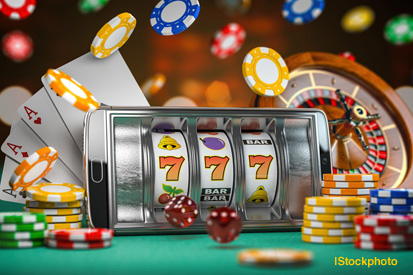Regarding slot machines, players frequently get drawn in by the bright lights, intriguing themes, and the thrill of the reel spins. But beyond the sparkle and excitement lies an essential concept that every gamer should be aware of: Return to Player percentage, or RTP. This key metric holds great importance in deciding how much of your wagered money will return to you over time, shaping your experience and strategy as you play.
RTP is typically represented as a percent and represents the typical sum of money returned to players compared to the cumulative wagers. For instance, if a slot game has an RTP of 95 percent, it means that, on the average, players should anticipate receiving $95 for each $100 wagered. Understanding this concept can enable players to make better choices when deciding on slots to spin, ultimately enhancing their gaming experience at the casino.
What the definition of RTP?
RTP, also known as RTP, represents a crucial concept in the realm of casino slots games. It indicates the fraction of total bets which a specific slot is programmed to return to players in the long run. For example, if a specific slot has an RTP of 95%, this means that, theoretically, players should anticipate to get back 95 dollars for each $100 wagered during extended play. Grasping RTP assists players evaluate the likely returns of various slot games.
RTP does not serve as a promise of specific victories but instead a average determined over many spins. Players’ experience may differ significantly as a result of the randomness intrinsic in the games. A better RTP indicates more favorable odds for the player, thus making it a key factor to take into account while choosing the slots to choose. Still, despite having high RTP, there can be periods in which players encounter losses, because randomness plays a significant role.
It should also be noted that the slots available have varying RTP percentages. Some slots may have a reduced RTP due to a considerable entertainment or distinct elements, while others maintain a elevated percentage to attract more conservative players. Comprehending RTP allows players to form wise choices about their gaming strategies and oversee their funds efficiently while relishing the thrill of casino slots games.
How Return to Player is Determined
The RTP, also known as RTP, represents a vital measurement within the realm pertaining to gambling slots games. It indicates the ratio from total bet funds which a slot machine is expected to return to players over time. Understanding the method by which this measurement is derived requires insight of both the game’s architecture as well as its payout system. The RTP is determined via intricate calculations as well as data evaluation executed in the course of the game creation phase. Game developers take into account various elements, including the likelihood of winning outcomes and the size of returns on every outcome.

To compute RTP, the creators simulate a large quantity of spins of the slot machine. These simulations aid determine the average amount that on average, a player can expect to win according to their wagers. For example, when a slot game has an RTP of 95%, this means that, in theory, for every one hundred bet, gamblers should anticipate get ninety-five dollars back over time. This figure does not indicate how much a player will win in a single session or over a couple of plays; rather, it shows long-term return projections.
The values of RTP are usually published from the gaming house or game creator. Gamblers should always look for this data while selecting a casino slots, as it can significantly influence their overall enjoyment. A greater return value usually means a higher chance to recoup a segment of bets, even though specific sessions may differ greatly. Grasping RTP enables players to choose wisely and improve their overall experience in the realm of slot games.
Importance of RTP in Gaming
Understanding the Return to Player or Return to Player is essential for any player involved in casino slots games. RTP is the percentage of wagered money that a game is set to pay back to players over time. https://1goal123.com A greater Return to Player means that gamers can expect receiving a larger share of their bets back, making it an significant factor for those looking to enhance their gambling enjoyment. Knowing this figure aids gamers make informed decisions about which slots to play, as it can significantly influence their potential winnings.
Moreover, RTP holds a central role in the overall fairness and clarity of slot games. Players are often attracted to games with higher RTP percentages because they provide a superior opportunity of winning over the long term. Gaming establishments and game developers use RTP as a selling point to lure players, ensuring they maintain a competitive edge in the booming gambling industry. By being aware of RTP, players can select slots that align with their comfort level and objectives.
In conclusion, the concept of Return to Player encourages responsible gambling behavior. By understanding that not all slots will provide short-term winnings and that Return to Player is based on long-term play, players can regulate their anticipations and playing habits effectively. This knowledge enhances the enjoyment of casino slots while fostering a more sustainable gambling landscape. Players who grasp the significance of Return to Player are likely to have a better time and reduce the risks of gambling issues.
